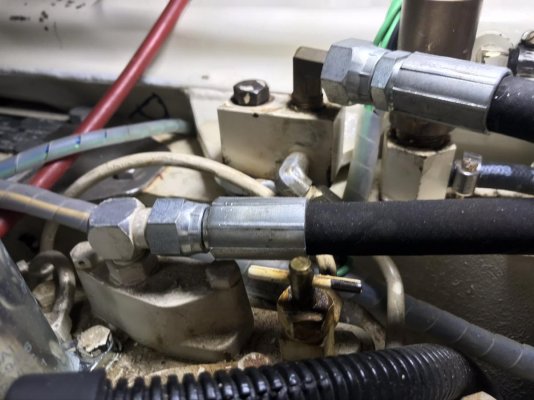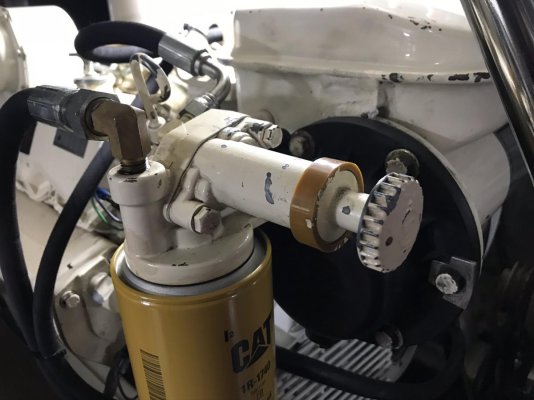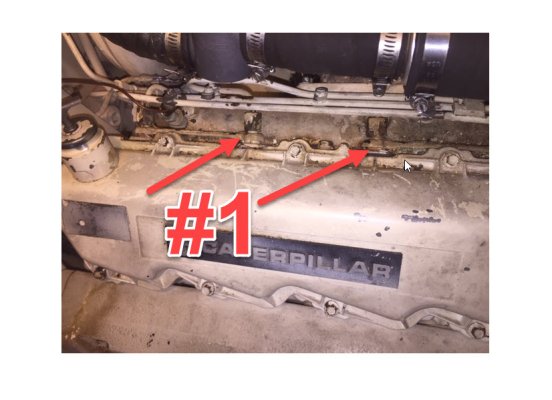RickyD
Guru
- Joined
- May 4, 2018
- Messages
- 729
- Location
- United States
- Vessel Name
- Aquarius
- Vessel Make
- Californian 55 CPMY
So I'm headed out to Catalina Island for a weekend and I was draining my middle tank before cutting over to my larger aft fuel tank. Well I was distracted and ran her down till the engines started to quit. I switched to the aft tank and the stb engine kept running but the port quit. I tried to start. No good. Bled the top injector, no start. Heck with it complete the journey on one engine. Next day, bled again, no start. Then the + battery terminal separated from the battery. So I put a stainless screw through it and tried again to start. Turns over but no start. Heck with it. Came home on one engine. Bought new start 8D AGM Batts. No start. Turns over fast, makes a sound like one cylinder wants to fire, no start. I checked to be sure the manual shut down solenoid was not depressed, nor was it going down when the starter was engaged. I pumped, bled again. No start. Any ideas? Oh I also deactivated my Fireboy system just to be sure. No start.





